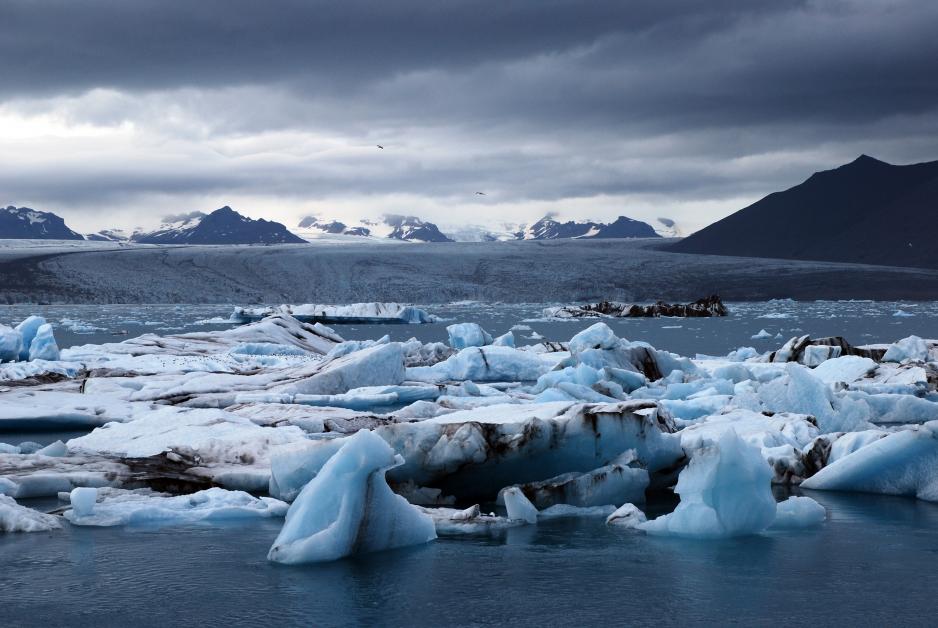Climate change exacerbates the impact of Persistent Organic Pollutants

Higher temperatures increase the volatilization of Persistent Organic Pollutants (POPs) and exacerbate their emissions from secondary sources. Indirectly, climate change affects POPs through extreme weather events, changes in atmospheric circulation and ocean currents, in marine biological productivity and food chain structures.
A warming climate has various effects on the distribution and toxicity of POPs, often worsening their effects on humans and the environment. This is the conclusion of an article by Wang, Sun and Yao of the Chinese Academy of Sciences Center for Excellence, which was recently published in the journal Science China Earth Sciences. They reviewed the results of 10 years of research on how a changing climate affects the emission, transport, storage and toxicity of POPs. Understanding these impacts is crucial for formulating and adapting policies on pollution.
Arctic as indicator for POPs
In the Arctic, climatic changes are more pronounced than in other regions. Due to its environmental conditions, the Arctic acts as a “global sink” for POPs, which are transported there over long distances. For this reason, it is considered an indicator region for global levels of POPs.
Subsistence food as source of health problems
The combination of environmental changes and the high storage of POPs in the Arctic aggravate food insecurity and health issues, as the pollutants accumulate in marine mammals and other animals, which are central to traditional Arctic subsistence food. Due to these animals’ high levels of fatty tissue, where the POPs are stored, and their place at the top of the food chain, POPs accumulate in their tissue, leading to pernicious levels.
High food prices in the North make subsistence a necessary additional food source and further aggravate people’s exposure to the harmful effects of persistent pollutants, such as neurobehavioral, immunological, reproductive, cardiovascular, carcinogenic and endocrine health issues.

Indigenous communities raise awareness
Arctic indigenous communities’ efforts to raise awareness of the urgency and the dangerous effects of POPs on their health have had only limited success. In 2015, Vi Waghiyi of the traditional Yup’ik community Savoonga, Alaska, wrote in an open letter to Alaska Dispatch News: “The United States is one of only a handful of nations which have not signed the Stockholm Convention, [a legally binding agreement on a global level], and so is not bound by this latest ban. The U.S., along with Canada, remains the highest user of this toxic chemical [PCP or pentachlorophenol].”
Levels of “legacy POPs” decreasing
However, most of the pollutants listed under the Stockholm Convention – also called “legacy POPs” - show a declining trend in the Arctic air and biota, which suggests that the efforts of limiting and banning POPs under the Stockholm Convention and previous regulations did effectively bear fruits.
Nevertheless, the fact that these POPs can still be observed now after having been banned for decades, often 20 to 30 years, in many countries, emphasizes just how persistent they are. Another conclusion we can draw is the importance of a timely and geographically wide-spread ban.
New chemicals less pernicious
New chemicals introduced to replace POPs in many everyday items appear to have less damaging effects on the ecosystem and wildlife, Adam Morris from the Carleton University in Ottawa found. As reported by CBC, his preliminary research findings suggest that they break down more in the environment and are better metabolized by animals. Even though some remain unconvinced, these results could be interpreted as a step in the right direction and a sign of progress.
Arctic was key for international convention
The discovery of POPs in the Arctic was of great importance for international legislation. In the 1970s and 1980s, high levels of POPs were unexpectedly found in the Arctic, which was thought to be a largely unpolluted area. The conclusion was that these chemicals must have been transported over great distances to end up so far from their main use area. As a result, the issue of POPs in the Arctic rose to global prominence. It played a substantial role in subsequent international efforts to limit POPs emissions, such as the Stockholm Convention on POPs, which particularly refers to the vulnerability of Arctic regions and their inhabitants.
International conventions not equally ratified
The Convention entered into force in 2004 and is managed by the United Nations Environment Program (UNEP). As of today, 179 parties have ratified the Convention, including seven of the Arctic states with the exception of the United States. Denmark ratified, but excluded the territory of Greenland and initially also the Faroe Islands from the provisions. Canada and Russia have ratified the original treaty, but not its subsequent amendments that list additional pollutants, such as endosulfan and HBCD, as POPs.
